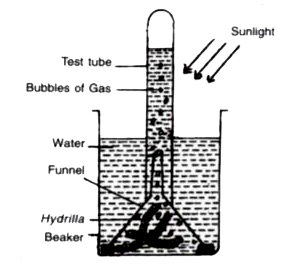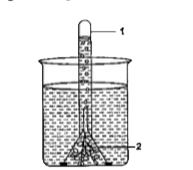Which way would the pH shift when CuSO4, is added to pure water? Write a net ionic equation to support your answer.
To determine how the pH would shift when CuSO4 is added to pure water, we need to analyze the behavior of the ions in solution and their effects on the pH.
1. Dissociation of CuSO4 in Water:
When CuSO4 (copper(II) sulfate) is added to water, it dissociates into its constituent ions:
CuSO4(s)→Cu2+(aq)+SO2−4(aq)
2. Behavior of Cu²⁺ Ion:
The Cu²⁺ ion can react with water to form a complex with hydroxide ions, which can lead to the formation of a weak base:
Cu2+(aq)+2H2O(l)⇌Cu(OH)2(s)+2H+(aq)
This reaction shows that Cu²⁺ can produce H⁺ ions, which will increase the acidity of the solution.
3. Effect on pH:
Since the reaction produces H⁺ ions, the concentration of H⁺ in the solution increases, leading to a decrease in pH. Therefore, the pH of the solution will shift to the acidic side (pH < 7).
4. Net Ionic Equation:
The net ionic equation that represents the overall process can be simplified to:
Cu2+(aq)+2H2O(l)→Cu(OH)2(s)+2H+(aq)
Conclusion:
When CuSO4 is added to pure water, the pH of the solution decreases, indicating a shift towards acidity.
When CuSO4 (copper(II) sulfate) is added to water, it dissociates into its constituent ions:
CuSO4(s)→Cu2+(aq)+SO2−4(aq)
The Cu²⁺ ion can react with water to form a complex with hydroxide ions, which can lead to the formation of a weak base:
Cu2+(aq)+2H2O(l)⇌Cu(OH)2(s)+2H+(aq)
This reaction shows that Cu²⁺ can produce H⁺ ions, which will increase the acidity of the solution.
Since the reaction produces H⁺ ions, the concentration of H⁺ in the solution increases, leading to a decrease in pH. Therefore, the pH of the solution will shift to the acidic side (pH < 7).
The net ionic equation that represents the overall process can be simplified to:
Cu2+(aq)+2H2O(l)→Cu(OH)2(s)+2H+(aq)
When CuSO4 is added to pure water, the pH of the solution decreases, indicating a shift towards acidity.
Similar Questions
Which way would the pH shift when AlCl3 is added to pure water? Write a net ionic equation to support your answer.
View SolutionIdentify the acid and base which form sodium hydrogen carbonate. Write chemical equation in support of your answer. State whether this compound is acidic, basic or neutral. Also write its pH value.
View SolutionName the form of energy which a body may possess even when it is not in motion. Give an example to support your answer.
View SolutionWhat happens when
(i) chlorobenzene is treated with Cl2/FeCl3
(ii) ethyl chloride is treated with AgNO2,
(iii) 2-bromopentane is treated with alcoholic KOH ?
Write the chemical equations in support of your answer.
View SolutionSodium reacts with oxygen to produce sodium oxide, which dissolves in water to form sodium hydroxide. On adding hydrochloric acid to the base solution, salt and water are produced. Write balanced chemical equations to represent all the reactions stated in the question.
View SolutionHow does K2[PtCl4] gets ionized when dissolved in water? Will it form precipitate when AgNO3 solution is added to it? Give a reason for your answer.
View SolutionThe figure below represents an experiment set-up to study a physiological process in plants

What would happen to the rate of bubbling of the as it a pinch of sodium bicarbonato is added to the water in the beaker ? Explain your answer
View SolutionWhat did Meselson and Stahl observe when
They cultured E. coli in a medium containing 15Nh4CL for a few generations and centrifuged the content?
they transferred one such bacterium to the normal medium of NH4Cl and cultured for 2 genretion ?
What did Meselson and Stahl conclude from this experiment? Explain With the help of diagram
Which is the first geretic material? Give reasons in support of your answer.
View SolutionCan we store :
(i) Copper sulfate solution in zinc vessel ?
(ii) FeSO4 solution in silver vessel ?
(iii) Copper sulfate solution in iron vessel?
(iv) 1 M CuSO4 solution in Ni container ?
Give suitable explanation in support of your answer.
View SolutionThe following diagram demonstrates a physiological process taking place in green plants. The whole set up was placed in bright sunlight for several hours. Study the diagram and answer the questions that follow:

What would happen to the rate of bubbling of the gan if a pinch of sodiam bicarbonate is added to the water in the beaker? Explain your answer
View Solution
